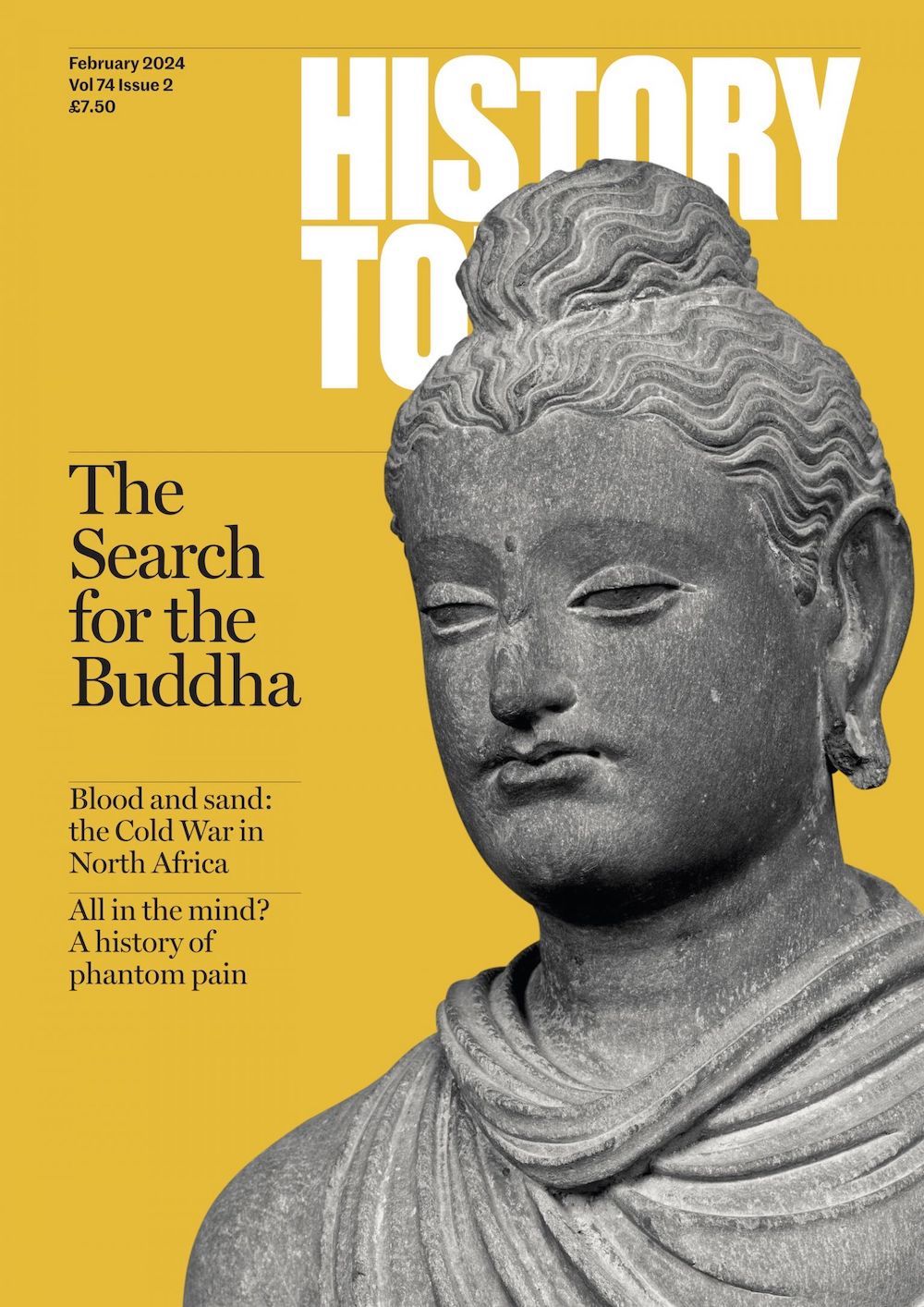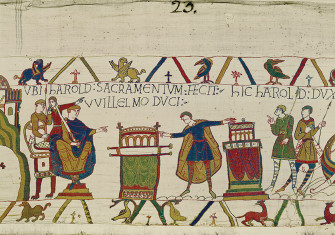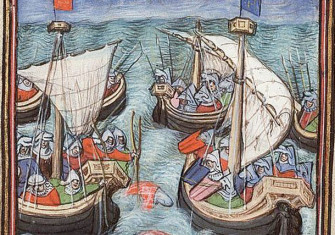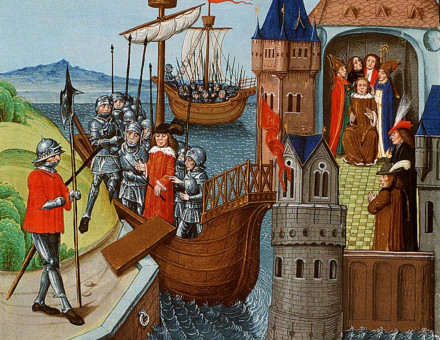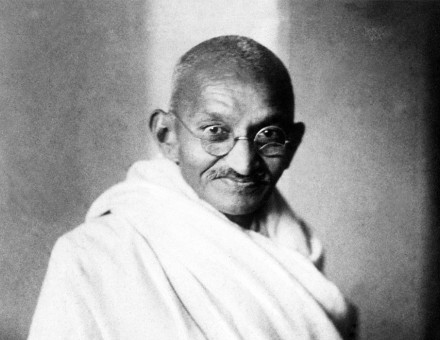How French Was Medieval England?
The Norman Conquest brought French kings, language and culture across the Channel. What did that mean for medieval England?
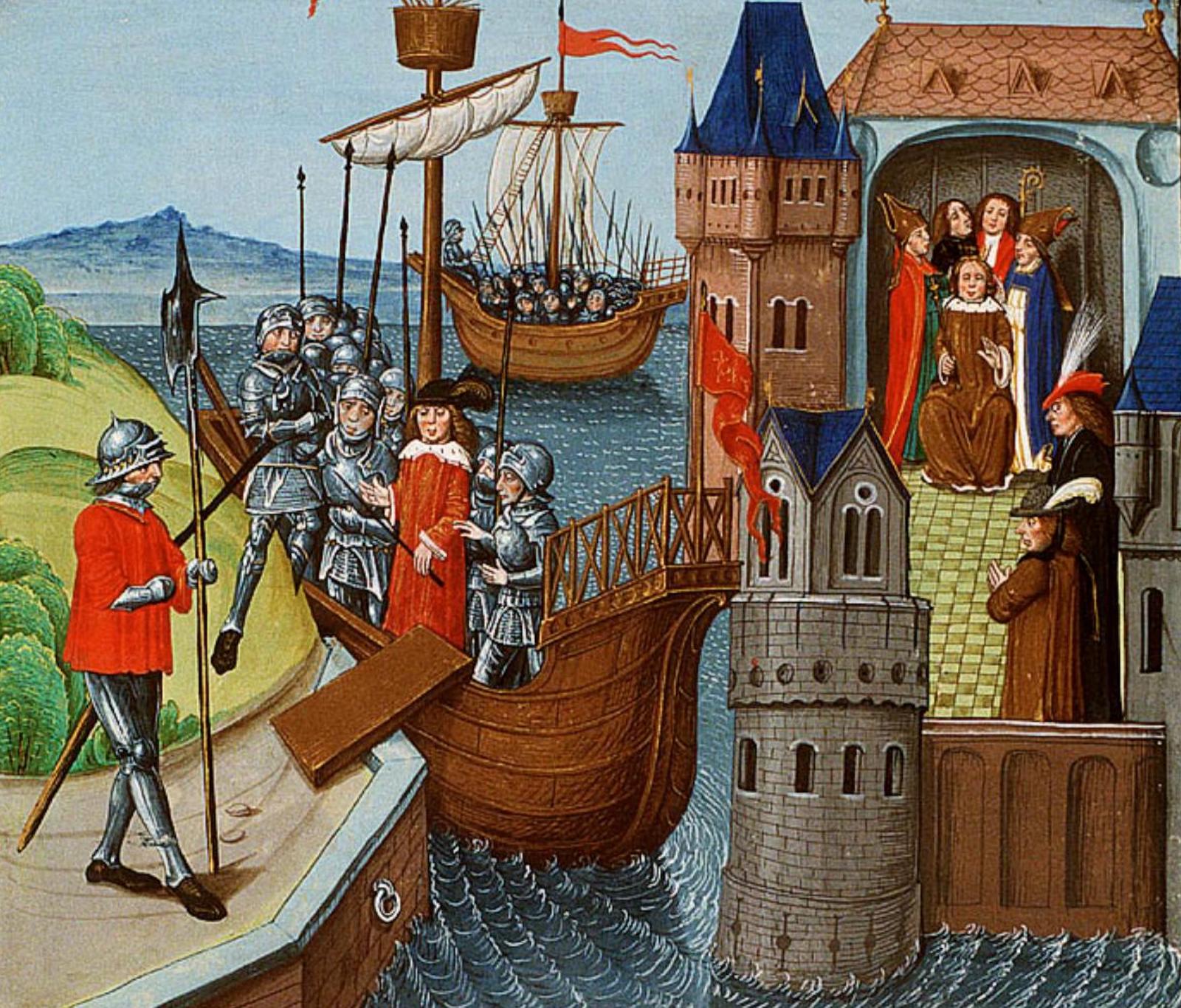
‘France might have subsumed England entirely’
Justine Firnhaber-Baker is Professor of History at the University of St Andrews
The medieval history of England and France was a close – if complicated – one, especially for elites. England’s royalty and nobility were deeply entwined with French lands, people and culture even in the early Middle Ages, long before the Norman Conquest of 1066. Contacts between the courts and clergy of England and Francia were frequent and significant. One of Charlemagne’s last descendants to be king of West Francia – the predecessor kingdom to France – grew up in the court of his uncle, King Æthelstan of Wessex in the tenth century.
The golden age of royal entanglement was surely the mid-12th to the early 13th centuries, after the marriage of Eleanor of Aquitaine and Henry Plantagenet in 1152, when the continental lands of the Angevin Empire stretched from Normandy to the Pyrenees. Their son Richard I Lionheart (r.1189-99) spent most of his time in France and wrote French poetry. Like his parents, he chose burial in a French monastery, while his brother Geoffrey was buried in Notre-Dame at the behest of the French king Philip II (a man with whom Richard himself supposedly sometimes shared a bed). When Richard’s successor John lost Normandy and angered his barons beyond enduring, they invited Philip II’s son Louis to invade and take the English crown in 1216. Had John not died during this invasion, leaving as his heir a pliable minor more to the barons’ taste, France might have subsumed England entirely.
Although the loss of all the Angevins’ continental lands except Gascony reduced English holdings to a rump by the 1220s, French language and culture became if anything more important in England. By 1300 French was a literal lingua franca of English government, international trade, literature and historical writing. With the beginning of the Hundred Years War in 1337, increasing numbers of Englishmen (and Welshmen) came to know France through military service, though elite entanglements continued to be very important, culturally as well as politically. The British Library now houses some important medieval French manuscripts taken from the French royal library in Paris by the Duke of Bedford during his regency for Henry VI (r.1422-71), the only English monarch ever to have been crowned king of France.
‘French was England’s only international vernacular’
Jocelyn Wogan-Browne is Emerita Fellow of the Medieval Academy of America and Emerita Professor at Fordham University, New York
French contributed so much vocabulary to medieval English that, alongside Latin, it remains the largest source of non-English words in modern English. French was always a language at the English royal court from at least the time of Edward the Confessor’s Norman mother, Emma. French’s prestige as a spoken language was reinforced when William of Normandy replaced English secular and ecclesiastical lords with his followers after 1066 (though William never sought to impose French: his written governance was in Latin). But by the late 12th century many of this small but influential group had also learned English for their interactions with the majority anglophones, while some English speakers learnt French in meritocratic court and church careers.
Latin remained the pimary written language, but, especially from the 13th to 15th centuries, French expanded and was spoken and written in the English parliament, legal pleading, estate management, maritime law, trade, accounting and some civic management. Perhaps as much as one fifth of England’s estimated 5.5 million people before the Black Death used French in various domains. In the late-14th and 15th century, England pioneered the formal teaching of French as demand for it increased. Early printing of French books outweighed that of English in England. French was England’s only international vernacular (English remained a regional language throughout the Middle Ages), and English elite brides, diplomats, crusaders, merchants and pilgrims needed French in Europe, the Mediterranean and the Arab world.
Did this make the English partly French? Only if you project back the 19th century’s nationalising image of French and English as the mutually exclusive properties of two nation-states. Migration, mobility and multilingualism characterised medieval England’s realms and participation in empires before and after the 11th century. Language can be recruited as an element of identity, but it is not always necessarily so. In Europe, multilingualism has long been normal for many – including in England, let alone in the British Isles.
‘Henry II ruled more of France than the king of France did’
Judith Green is Emerita Professor of Medieval History at the University of Edinburgh
From 1066 a new French-speaking elite, chiefly but not exclusively drawn from Normandy, was established in England. The upper levels of the landholding aristocracy and the top jobs in the Church were filled by the followers of William the Conqueror. Great complexes of cross-Channel estates were created, dissolved and reformed. As king of England Henry II (1154-89) ruled more of France than the king of France did, and even after the loss of almost all the French territories around 1204 links between the royal dynasties of England and France remained strong. Henry III had a Provençal wife, and the family of his contemporary Simon de Montfort – the so-called father of the English parliament – came from Montfort L’Amaury in France. The fashion for Gothic architecture, pioneered in northern France, crossed the Channel. Canterbury Cathedral, for instance, was rebuilt in the Gothic style in the late 12th century. Henry III’s plans for Westminster Abbey, to take another example, were influenced by his contemporary Louis IX’s plans for the Sainte-Chapelle in Paris. The French connection continued to shape the direction of high politics over the status of English possessions in France, and it also influenced cultural norms. French remained the language of the elite and of the common law courts for centuries, long after English, the language of the majority, regained its status – into the 17th century, in the case of the law.
Nevertheless, the influence of France, always essentially limited to a social elite, inevitably diminished over time. The 14th century was critical here as English kings went to war in France. The Hundred Years War was initially a dispute over the succession to the French throne, and for English kings at least it retained this character, though it evolved into a wider conflict pulling in other kingdoms. Yet the war in the long run helped to draw a sharper line between the two kingdoms. Ideas of English nationhood were used to justify levies of men and money. English churches and property which had been bestowed on French religious houses, now called ‘alien priories’, were seized. By the end of the war the relationship between the two countries had changed forever.
‘The ultimate question is what we mean by “English”’
David Bates is Emeritus Professor in Medieval History, University of East Anglia
To answer the question, we have to think of England as a European country. We have to think about the impact of the conquest of 1066 and about what is conventionally called the Twelfth-Century Renaissance. This was a time when there were multiple cultural interactions with what we now call France. One thinks, for example, of the beginnings of Gothic architecture, of new monastic orders like the Cistercians, of educational centres such as the Parisian schools, and of the aristocratic culture often described as chivalry. While we can conclude that England remained essentially English, its history in this remarkable period was a fusion of cultures. Previously predominant links to Scandinavia were replaced by ones with France and other parts of Europe.
The identity of the conquered kingdom continued to be English and law remained English law, albeit with changes made to accommodate the new elite and with new processes and procedures emerging, which often used the French language. The topmost elite of the new cross-Channel aristocracy rarely intermarried with the English and continued to speak French. But below that level there was much intermarriage and most of the population spoke English. Some truly remarkable and innovative histories of the English, almost all written in Latin, were produced. Interestingly, much of the earliest surviving history written in French, Gaimar’s Estoire des Engleis, was effectively a translation of a version of the Anglo-Saxon Chronicle. And the cross-Channel elite, while retaining landed and political interests in France, often patronised English monasteries and founded new ones. In this respect, integration was extensive.
These years were a period of connections for English men and women, with Europe and beyond. An illustration is the remarkable life of Adelard of Bath (c.1080-c.1150), who spent long periods in the Middle East and the Kingdom of Sicily, and produced translations of Arabic scientific works. Many, but not all, of the phenomena associated with the so-called Twelfth-Century Renaissance were products of a dynamism within the French kingdom which greatly influenced England. But in lots of ways, the relationship was symbiotic and the context was pan-European. The ultimate question to ponder is what we mean by ‘English’.

